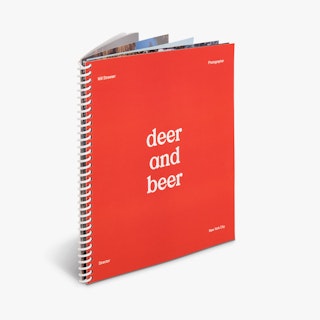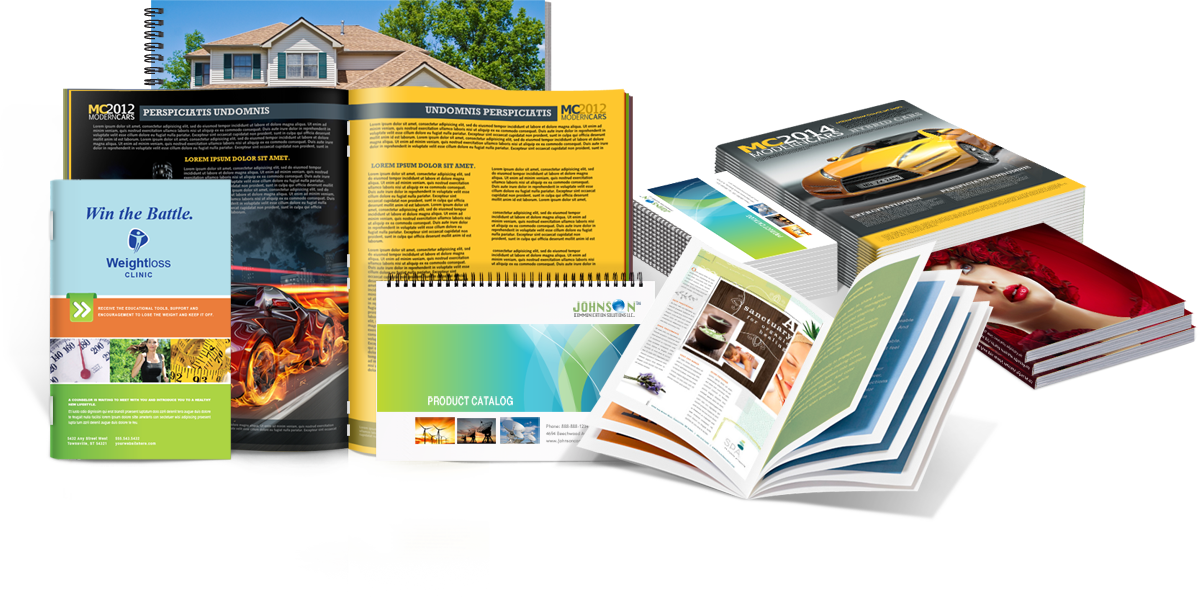The Necessary Guide to Recognizing Pamphlet Printing Options and Techniques
The procedure of brochure printing entails several factors to consider that can greatly affect the final product. From picking the appropriate style and size to recognizing the subtleties of binding techniques, each choice plays an essential function. Additionally, aspects such as paper supply and printing strategies additional influence the effectiveness of the brochure. As one browses these options, it becomes imperative to grasp exactly how they interconnect and what that indicates for the overall result.
Comprehending Brochure Styles and Sizes
When thinking about booklet printing, recognizing the various formats and dimensions available is necessary for attaining the desired discussion. Booklets can be created in many formats, including saddle-stitched, spiral-bound, and perfect-bound, each offering distinct advantages. Usual sizes vary from basic letter (8.5 x 11 inches) to smaller options like A5 (5.8 x 8.3 inches), enabling flexibility based upon content and target audience.Selecting the suitable size can affect both the design and reader interaction. Bigger dimensions may suit visually driven content, while smaller sized styles may be more straightforward and mobile. Furthermore, the variety of web pages affects the choice of binding approach, as thicker pamphlets might call for tougher bindings. Ultimately, recognizing these elements enables a more tailored strategy, making certain that the end product lines up with the intended message and visual, boosting the total effectiveness of the interaction.
Selecting the Right Paper Stock

Binding Techniques: Considerations and options
When it comes to binding techniques for pamphlets, a number of options are readily available, each with unique advantages. Saddle stitch binding supplies a cost-effective service for thinner brochures, while excellent binding methods give an even more refined search for thicker magazines. Wire-O binding sticks out for its longevity and simplicity of use, making it suitable for documents that need adaptability.
Saddle Stitch Binding
Saddle stitch binding uses a sensible and affordable solution for assembling brochures, making it a popular selection amongst services and publishers. This binding method entails folding sheets of paper in fifty percent and stapling them along the fold line, creating a organized and cool appearance. Typically appropriate for booklets with a lower page matter, saddle stitching is optimal for magazines, sales brochures, and training materials. The simpleness of this technique allows for fast manufacturing and is frequently favored for marketing items or short runs. However, it is important to note that saddle stitch binding might not be ideal for thicker pamphlets, as the spine may not stand up under raised weight. In general, it stays a dependable alternative for many printing projects.
Perfect Binding Strategies
Perfect binding is an extensively made use of technique that offers a specialist and sleek coating to magazines and booklets. This approach involves gluing the web pages together at the spine using a strong adhesive, permitting a clean edge and the capacity to hold a larger variety of web pages contrasted to saddle stitching. Perfect binding is specifically appropriate for thicker booklets, such as directories and annual reports, where a tough, level spine is desired. Additionally, it supplies the choice for a printed cover that can be made to improve visual allure. Nonetheless, factors to consider such as web page matter, paper weight, and the planned use of the brochure must be taken into consideration, as they can influence sturdiness and total top quality.
Wire-O Binding Alternatives
Wire-O binding, recognized for its durability and flexibility, provides an outstanding choice for booklets that require very easy web page turning and a specialist appearance. This binding approach uses a collection of metal loopholes that hold pages safely, permitting them to lie level when open. It is specifically appropriate for guidebooks, catalogs, and presentations due to its robust nature. Wire-O binding is readily available in different colors and diameters, accommodating different web page counts and thicknesses. In addition, it allows the incorporation of covers and tabs, enhancing the pamphlet's general visual. Considerations for Wire-O binding include the choice of wire color, the dimension of the loops, and the degree of customization desired, every one of which can exceptionally affect the end product's look and performance.
Digital vs. Offset Printing: Which Is Best for You?
When selecting a printing approach for booklets, recognizing the differences in between digital and offset printing is essential. Digital printing utilizes modern-day innovation to create top notch prints promptly and cost effectively, making it optimal for brief runs or tasks requiring fast turnaround times. It permits personalization, providing the capacity to print on-demand with minimal waste.In comparison, offset printing is a typical technique that excels in creating large amounts with consistent top quality. It involves moving ink from a plate to a rubber blanket, after that to the paper, which results in lively colors and exact details. Offset printing normally requires longer setup times and is a lot more cost-effective for larger volumes.Ultimately, the option in between digital and offset printing depends on job needs, budget, and desired quantity. For little, time-sensitive tasks, electronic might be the most effective selection, while countered may be more suitable for larger, top notch manufacturings.

Creating Your Pamphlet: Tips and Ideal Practices
When making a pamphlet, mindful interest to design, font style selection, and color usage can substantially boost its performance. A well-structured design guides the reader's eye, while appropriate typefaces ensure readability and communicate the desired tone. Additionally, reliable use color can evoke emotions and emphasize vital details, making the general design more impactful.
Picking the Right Format
Exactly how can one effectively choose the appropriate design for a booklet? It is vital to assess the booklet's function and target audience. A clean, arranged design enhances readability and involvement. Utilizing a grid system can assist in lining up elements continually, producing a specialist look. Additionally, integrating visual power structure with differing sizes and positionings of images and message can direct the viewers's eye and emphasize vital information. It is additionally important to leave enough white space, which protects against overcrowding and enables better focus. Ultimately, evaluating various layouts with mock-ups can give insight right into just how the style executes in real-world scenarios, making sure that the last product satisfies both visual and functional requirements.
Choosing Ideal Fonts
A well-chosen font style can considerably boost the total design of a booklet, matching the design and strengthening the web content's message. The option of typefaces need to consider readability, especially for body text, as it guarantees the information comes to all visitors. Sans-serif font styles are commonly favored for electronic layouts, while serif font styles can provide a standard feeling in printed materials. It's advisable to restrict font selections to 2 or 3 to preserve visual coherence. Additionally, font dimension plays a vital duty; headings need to be not overwhelming but distinctive, while body message must be comfy for reading. When selecting fonts, placement with the pamphlet's style and target audience is important for effective interaction and visual appeal.
Effective Use Shade
Color offers as a powerful device in brochure design, forming perceptions and leading reader feelings. It can evoke sensations of trust, calmness, or exhilaration, relying on the shades picked. Designers must take into consideration shade theory concepts, making sure that the chosen combination straightens with the booklet's message and target audience. For circumstances, using warm shades like red and orange can create seriousness, while cooler tones like eco-friendly and blue foster tranquility.Additionally, comparison plays a vital role; corresponding shades can boost readability and visual charm. Consistency in color usage across pages additionally reinforces brand name identification and cohesion. Ultimately, effective color application not only catches interest however additionally enhances the pamphlet's objective, making it learn this here now an important aspect of successful design.
Finishing Touches: Coatings and Special Effects
While numerous consider the content and layout of a booklet the most critical elements, the finishing touches, such as coatings and special results, play an essential duty in boosting its total charm. Coatings can supply security click for more info and sturdiness, guaranteeing that the booklet withstands damage. Matte coatings use an advanced, non-reflective surface, while shiny layers can make shades appear even more attractive and vibrant. Unique impacts, like embossing or foil marking, include a tactile measurement that can produce a memorable impact. These methods can highlight particular locations, accentuating essential information or creating aesthetic passion. Additionally, UV finish can offer a high-shine finish that raises the overall look.Together, these completing touches not just enhance the pamphlet's aesthetic yet additionally interact professionalism and reliability and focus to detail, inevitably leaving an enduring effect on the visitor.
Cost Considerations for Pamphlet Printing
Comprehending the numerous cost factors to consider for booklet printing is necessary for organizations and companies intending to maximize their spending plans. Key aspects affecting expenses consist of the selection of paper, binding, and ink approaches. Better products, such as exceptional paper or specialized inks, usually raise the overall expense. Furthermore, the dimension and web page count of the booklet play a considerable duty; bigger booklets require more sources and time to produce.Another vital consideration is the printing technique, whether digital or balanced out, as each has its very own rates framework and viability for various amounts. Businesses ought to likewise factor in style expenses, which can differ based upon intricacy and using specialist services. Ultimately, shipping and handling fees can contribute to the overall, particularly for big orders. By examining these components, companies can make educated choices that line up with their monetary abilities while accomplishing the preferred high quality in their printed materials.
Frequently Asked Questions
What Are the Environmental Influences of Pamphlet Printing?
The ecological effects of brochure printing include logging from paper manufacturing, carbon emissions from transport, and waste generation from discarded materials - Booklet Printing. Sustainable practices, such as making use of recycled paper and eco-friendly inks, can minimize these results
Just How Can I Make Sure Color Accuracy in My Pamphlet?
To assure color precision in a pamphlet, one should utilize adjusted screens, use specialist color accounts, conduct examination prints, and select premium printing services that supply color matching and proofing options for ideal outcomes.
What Is the Typical Turn-around Time for Brochure Printing?
The common turn-around time for pamphlet printing varies depending on the complexity and quantity - Booklet Printing. Typically, it varies from a couple of days to 2 weeks, affected by variables such as publishing methods and ending up demands
Exist Minimum Order Quantities for Pamphlet Printing?

Can I Publish Pamphlets in Numerous Languages?
Publishing booklets in multiple languages is possible. Many printing services use choices for multilingual or multilingual formats, enabling efficient communication. Cautious planning guarantees that develop components fit various languages without jeopardizing readability or aesthetic appeals. Furthermore, elements such as paper supply and printing techniques additional affect the effectiveness of the booklet. When considering booklet printing, recognizing the various layouts and sizes readily available is essential for achieving the wanted presentation. When selecting a printing technique for booklets, comprehending the differences between electronic and balance out printing is essential. Furthermore, the size and page count of the booklet play a considerable duty; bigger pamphlets need more sources and time to produce.Another vital consideration is the printing technique, whether digital or balanced out, as each has its very own rates framework and suitability for different quantities. The environmental effects of pamphlet printing consist of logging from paper production, carbon exhausts from transportation, and waste generation from thrown out materials.